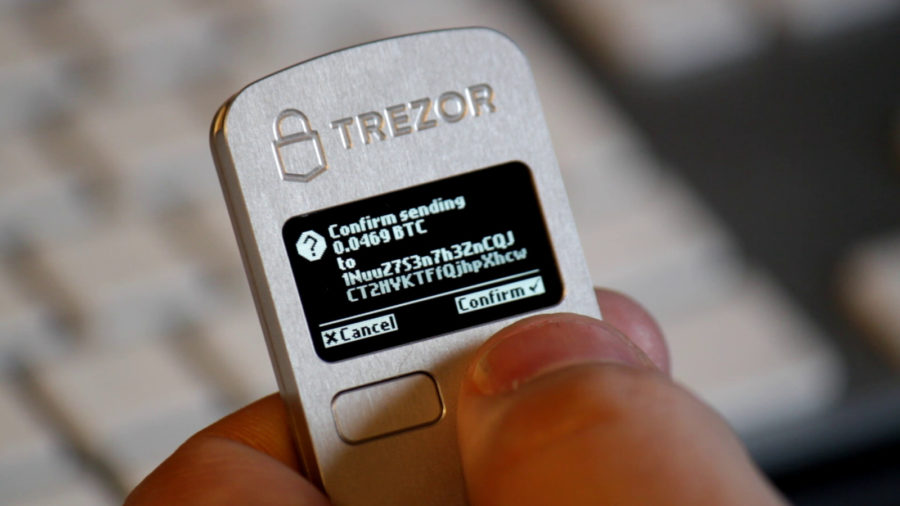Over the past three years, HTC has been doing poorly, the company churns out unprofitable quarters. A pleasant but passing exception was Q1 2018, when the company earned just over $ 700 million. However, this, unfortunately, is not the merit of consumers who have re-tried the brand's smartphones, but Google. Perhaps someone missed it, but Google for $ 1.1 billion bought from HTC about 2,000 thousand designers, engineers and related personnel, that is, the entire department responsible for the design of new devices.
This amount will allow HTC to stay afloat for some time, because the results for the second quarter indicate that the company again went into negative territory by $ 67 million. If you are interested, then in a separate article we can understand the reasons why customers stopped loving HTC.
Despite the deplorable situation, HTC does not even think to hang his nose, but on the contrary, is trying with all his might to attract attention, doing experiments both in the field of design (transparent case) and technology (sensitive edges). In my opinion, it was a little late, but the company decided to react to the cryptocurrency topic. HTC opened a pre-order for a blockchain phone announced back in May, or a blockchain phone, or a phone wallet for cryptocurrencies and various tokens.

Blockchain and smartphone
In May, a company representative said that the new HTC Exodus 1 will not only be a wallet, but also a gadget for trading bitcoins between users, and will also allow you to 'own your own identity', that is, to own your own digital identity. However, so far, none of this is present. In simple terms, the Exodus 1 is a smartphone that has a dedicated secure area for storing cryptocurrencies. In general, there are two types of crypto wallets. The first is the so-called cold. The easiest way is to compare such wallets with flash drives, that is, they are completely isolated from the Internet and can lie on the shelf. It is believed to be the safest option as no hacker can break it. They can only bang on the head and take away.

The second type of wallets is, respectively, connected to the Internet. There is already room for operational hacker activities. Attackers constantly find vulnerabilities and withdraw large sums from the accounts of unsuspecting citizens. For example, relatively recently, criminals managed to take more than $ 500 million from the accounts of one of the Japanese cryptocurrency exchanges.
Exodus 1 offers an option in the middle. HTC decided to use the technology developed by the Arm holding (responsible for all new ARM chipsets). The technology is called Arm TrustZone. Its essence is to create a separate zone on the chipset, independent of Android OC, where only trusted software can work. Arm says TrustZone can be embedded in any high-performance Arm Cortex A-core. TrustZone is a section in the chipset core that contains the standalone Rich OS operating system. Thus, Arm creates an infrastructure, that is, a blank, and then manufacturers within the Rich OS can create their own secure solutions. In fact, anything can be stored there – photos, documents, separately launched programs. And HTC I decided to use it as a wallet. And he promises that in the future it will be possible to store all your digital data there. I guess this means passwords, bank card details, etc.

It should be said right away that today TrustZone cannot provide 100%, as it has known vulnerabilities. Wired reporters posed this question to representatives HTC. They said that for lack of something better, this is the best option at the moment. And in general they are right, as all known exploits for TrustZone are quite intricate and difficult to use.
I liked the data recovery technology described in the press release in case of loss or breakdown of a smartphone. In HTC the method was called Social Key Recovery. Before using the protection zone, you should find 3-5 people you trust. These people will have to install a special application on their smartphones that will allow them to split the recovery key into parts. Accordingly, when the time comes, then:

But if your friends are bunglers and lost their own smartphones, or just a friend took it and took offense, then your data will be lost forever. The only thing I did not understand, but if four of them have a key, and the fifth is lost, is it also the finish or are there options? Project curator Phil Chen says that this is version 1.0 of the backup and in the future the company is implementing a number of other recovery methods.
In a press release HTC, he admits that he is engaged in experiments, as he invites not a wide audience to get acquainted with the device, but only crypto enthusiasts and developers. The company emphasizes that at the current stage it is not expecting big sales, but wants, first of all, to create a community of stakeholders who will act as beta testers. If you are interested, the company has launched an official Telegram channel. It's called HTC EXODUS (OFFICIAL). In the near future they promise to give API to developers.
HTC EXODUS 1 is based on HTC U12, about which we can safely say that this is a very beautiful smartphone. Let's list the main technical characteristics.
Specifications:
- Processor: Qualcomm SDM845 Snapdragon 845, Octa-core (4 × 2.8 GHz Kryo 385 Gold & 4 × 1.7 GHz Kryo 385 Silver), Adreno 630
- Memory: 6GB (DDR4x RAM) / 128GB (UFS2.1 Storage)
- Screen: 6.0 inches, Super LCD 6, 1440 x 2880 pixels, 18: 9 ratio, 537 ppi density, DCI-P3 extended color gamut, HDR10, Corning Gorilla Glass
- Battery: Li-Ion 3500 mAh, Quick Charge 3.0
- Main camera: dual: 12 MP (f / 1.8, 1.4μm, Dual Pixel P DAF) + 16 MP (f / 2.6, 1.0μm), P DAF and laser autofocus, optical stabilization, gyro-electronic stabilization, 2x optical zoom, video recording 2160p @ 60fps, 1080p @ 30/60 / 240fps, smart sound recording
- Front camera: dual 8 MP (f / 2.0, 1.12μm), video recording 1080p
- Sim card: 2 Nano-SIM
- Network and data transmission: GSM 900/1800/1900, 3G, 4G LTE, Wi-Fi 802.11 a / b / g / n / ac, dual-band, Wi-Fi Direct, DLNA, Bluetooth 5.0 , A2DP, aptX HD, LE, A-GPS, GLONASS, GALILEO, BDS, NFC
- Sensors: Fingerprint Reader (Rear), Accelerometer, Gyroscope, Proximity, Compass
- Other: IP68, Edge Sense 2, no 3.5mm, Zion Wallet
- Color: translucent black
- Materials: aluminum frame and glass
- Dimensions: 156.6 x 73.9 x 8.7mm, 188g
- Price: 0.15 BTC or 4.78 ETH (about 62,000 rubles)
Probably for security reasons, the Exodus 1 ditched the microSD card slot. I think you noticed that the price of a smartphone is indicated in bitcoins and ether. In my opinion, it is a bit pretentious to do this, but you can buy a new smartphone only with the help of cryptocurrencies. On the other hand, this is an additional filter to cut off everyone who is not related to the topic or is not serious. You can already pre-order on the site. The device will be available in December.

The press release states that the smartphone will be available in 34 countries, and for details it is sent to the website. Unfortunately, I couldn't find the list. So far it is known that the device will be available in the USA, Taiwan, Hong Kong, Singapore, New Zealand, Great Britain and Norway. Are there really such crypto specialists living in Norway that they were included in the first wave?
Competitors
The main competitor HTC Exodus 1 is a Sirin Labs product called Finney. However, Finney has a simpler idea. This is a regular smartphone with a cold wallet. Finney is also in the pre-order stage for now. Sirin Labs did not bother with cryptocurrencies and assessed the device simply and clearly – $ 999.


The technical characteristics of the device are more modest, and the company does not particularly talk about them. So far it is known that for $ 1,000 the buyer will receive:
- Processor: Snapdragon 845
- Screen: 6.0 inches, 18: 9 ratio, notch
- Main camera: 12 MP
- Front camera: 8 MP (wide angle)
- Memory: 6GB / 128GB
- Battery: 3,280mAh
- Operating system: Sirin OS (modification Android 8.1)
It is known that the smartphone will have two screens. One main, the second is hidden on the back cover. As I understand it, this will be the screen for interacting with the wallet: the second display opens and the wallet starts. An important point here is that this is not only a software, but also a physical feature. That is, there is any access to the wallet only when the second screen is open. This is an interesting enough secure solution. It would be great if other manufacturers also adopted it. A second screen is not needed, but a physical toggle button would be quite interesting. For example, to enter a banking application, you need to not only enter a password, but also flip a switch. And without this, entry is impossible.

In conclusion, we can say that although the topic of cryptocurrencies has calmed down, it brought blockchain technology into everyday life. And single protected smartphones, even if they do not shoot, will definitely serve for the development of technologies for protecting personal data.
